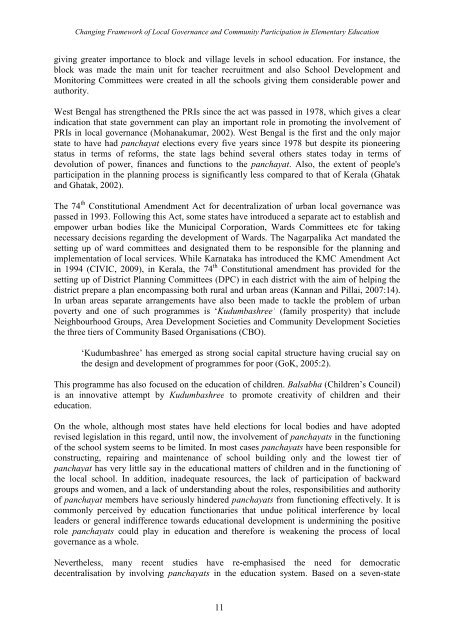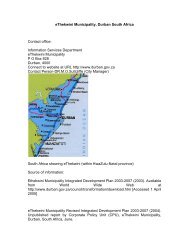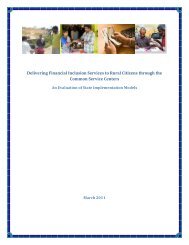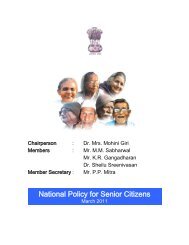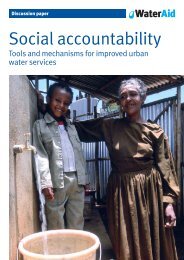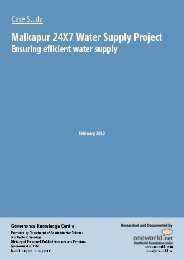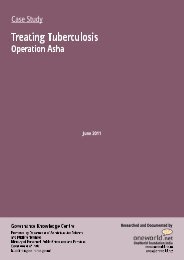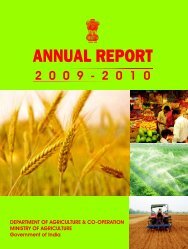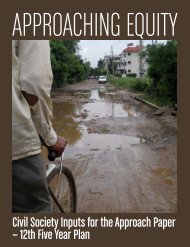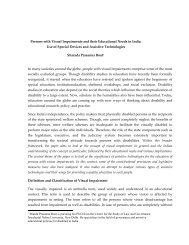Changing Framework of Local Governance and - Create
Changing Framework of Local Governance and - Create
Changing Framework of Local Governance and - Create
You also want an ePaper? Increase the reach of your titles
YUMPU automatically turns print PDFs into web optimized ePapers that Google loves.
<strong>Changing</strong> <strong>Framework</strong> <strong>of</strong> <strong>Local</strong> <strong>Governance</strong> <strong>and</strong> Community Participation in Elementary Educationgiving greater importance to block <strong>and</strong> village levels in school education. For instance, theblock was made the main unit for teacher recruitment <strong>and</strong> also School Development <strong>and</strong>Monitoring Committees were created in all the schools giving them considerable power <strong>and</strong>authority.West Bengal has strengthened the PRIs since the act was passed in 1978, which gives a clearindication that state government can play an important role in promoting the involvement <strong>of</strong>PRIs in local governance (Mohanakumar, 2002). West Bengal is the first <strong>and</strong> the only majorstate to have had panchayat elections every five years since 1978 but despite its pioneeringstatus in terms <strong>of</strong> reforms, the state lags behind several others states today in terms <strong>of</strong>devolution <strong>of</strong> power, finances <strong>and</strong> functions to the panchayat. Also, the extent <strong>of</strong> people'sparticipation in the planning process is significantly less compared to that <strong>of</strong> Kerala (Ghatak<strong>and</strong> Ghatak, 2002).The 74 th Constitutional Amendment Act for decentralization <strong>of</strong> urban local governance waspassed in 1993. Following this Act, some states have introduced a separate act to establish <strong>and</strong>empower urban bodies like the Municipal Corporation, Wards Committees etc for takingnecessary decisions regarding the development <strong>of</strong> Wards. The Nagarpalika Act m<strong>and</strong>ated thesetting up <strong>of</strong> ward committees <strong>and</strong> designated them to be responsible for the planning <strong>and</strong>implementation <strong>of</strong> local services. While Karnataka has introduced the KMC Amendment Actin 1994 (CIVIC, 2009), in Kerala, the 74 th Constitutional amendment has provided for thesetting up <strong>of</strong> District Planning Committees (DPC) in each district with the aim <strong>of</strong> helping thedistrict prepare a plan encompassing both rural <strong>and</strong> urban areas (Kannan <strong>and</strong> Pillai, 2007:14).In urban areas separate arrangements have also been made to tackle the problem <strong>of</strong> urbanpoverty <strong>and</strong> one <strong>of</strong> such programmes is ‘Kudumbashree’ (family prosperity) that includeNeighbourhood Groups, Area Development Societies <strong>and</strong> Community Development Societiesthe three tiers <strong>of</strong> Community Based Organisations (CBO).‘Kudumbashree’ has emerged as strong social capital structure having crucial say onthe design <strong>and</strong> development <strong>of</strong> programmes for poor (GoK, 2005:2).This programme has also focused on the education <strong>of</strong> children. Balsabha (Children’s Council)is an innovative attempt by Kudumbashree to promote creativity <strong>of</strong> children <strong>and</strong> theireducation.On the whole, although most states have held elections for local bodies <strong>and</strong> have adoptedrevised legislation in this regard, until now, the involvement <strong>of</strong> panchayats in the functioning<strong>of</strong> the school system seems to be limited. In most cases panchayats have been responsible forconstructing, repairing <strong>and</strong> maintenance <strong>of</strong> school building only <strong>and</strong> the lowest tier <strong>of</strong>panchayat has very little say in the educational matters <strong>of</strong> children <strong>and</strong> in the functioning <strong>of</strong>the local school. In addition, inadequate resources, the lack <strong>of</strong> participation <strong>of</strong> backwardgroups <strong>and</strong> women, <strong>and</strong> a lack <strong>of</strong> underst<strong>and</strong>ing about the roles, responsibilities <strong>and</strong> authority<strong>of</strong> panchayat members have seriously hindered panchayats from functioning effectively. It iscommonly perceived by education functionaries that undue political interference by localleaders or general indifference towards educational development is undermining the positiverole panchayats could play in education <strong>and</strong> therefore is weakening the process <strong>of</strong> localgovernance as a whole.Nevertheless, many recent studies have re-emphasised the need for democraticdecentralisation by involving panchayats in the education system. Based on a seven-state11


